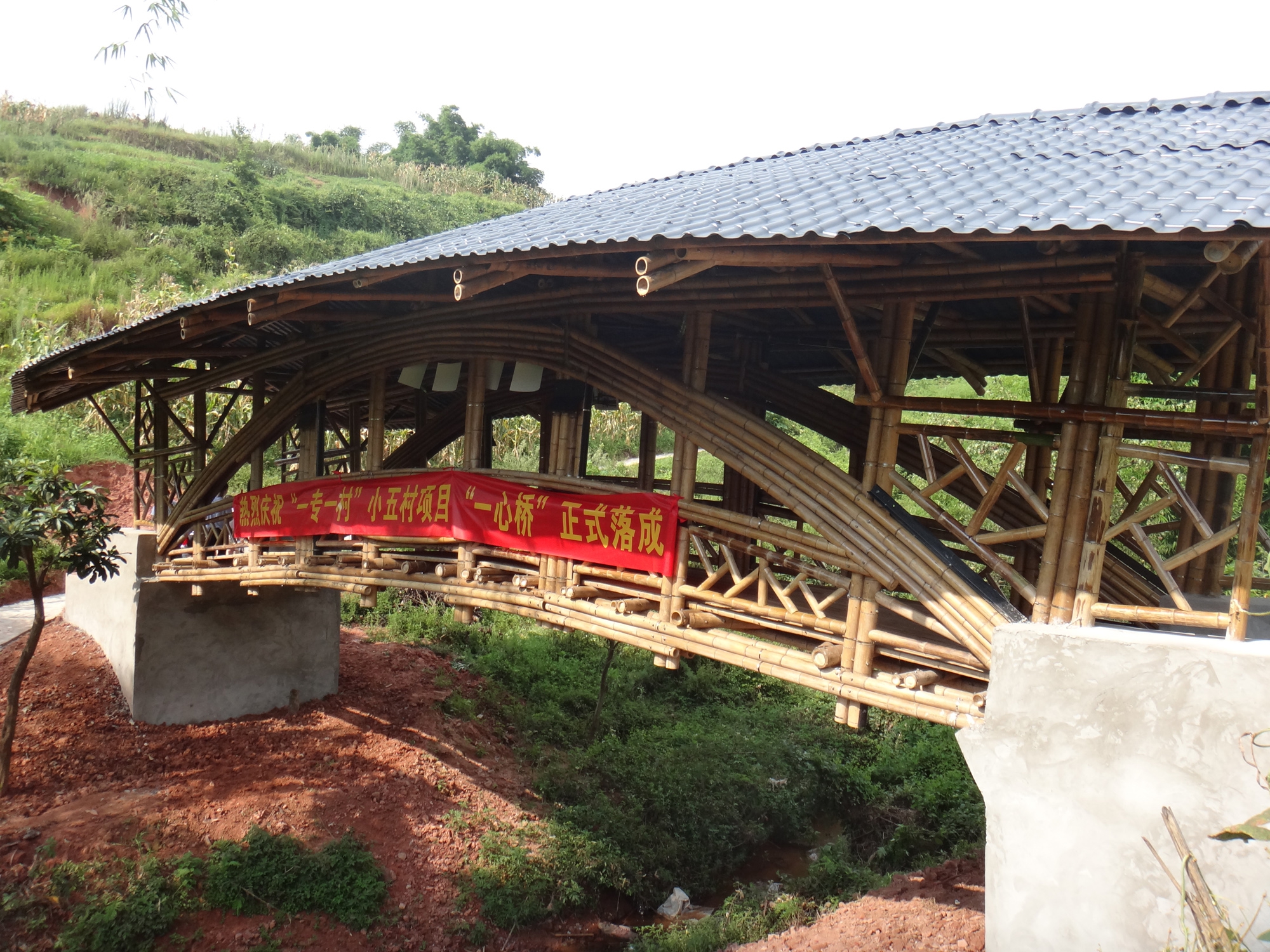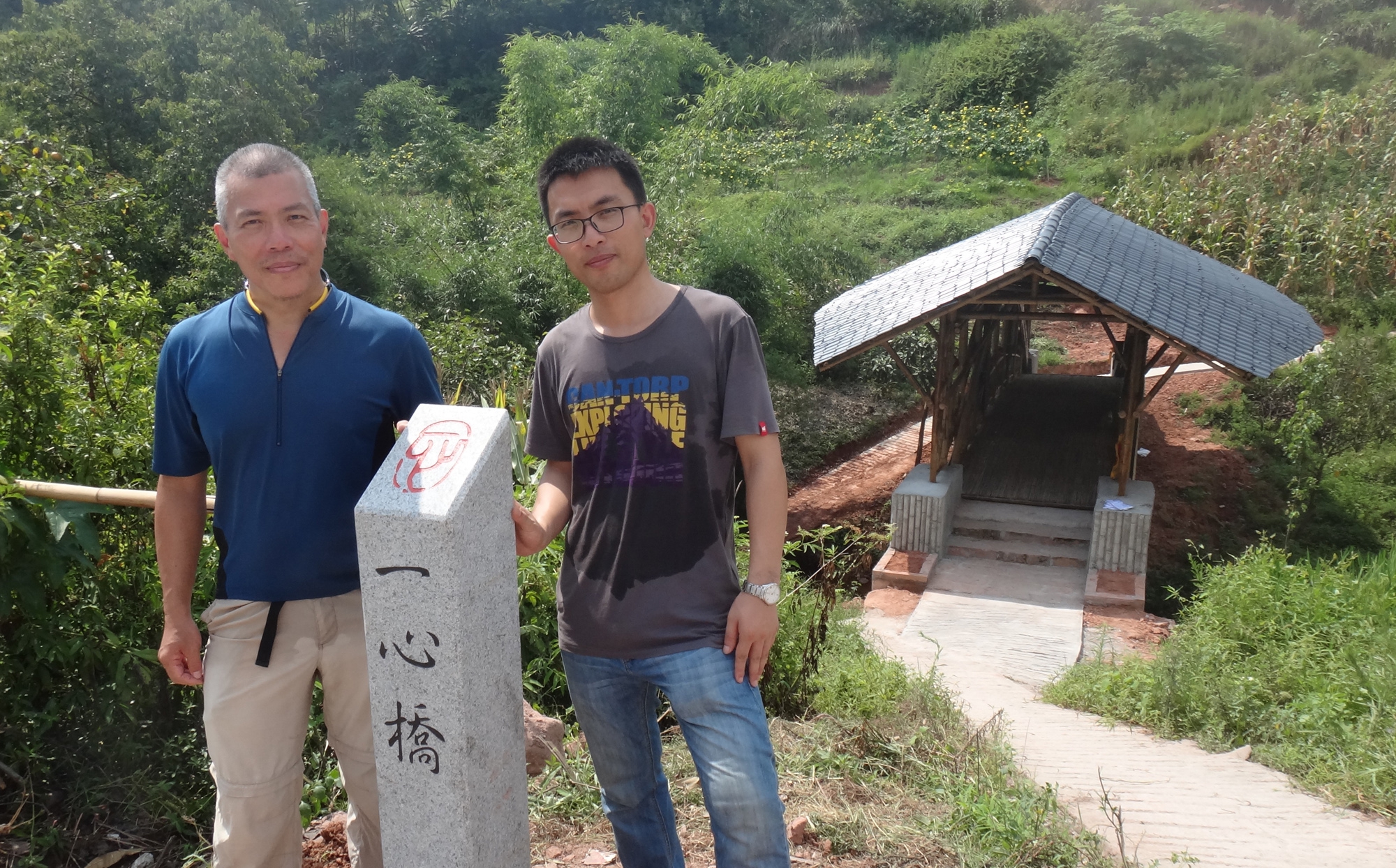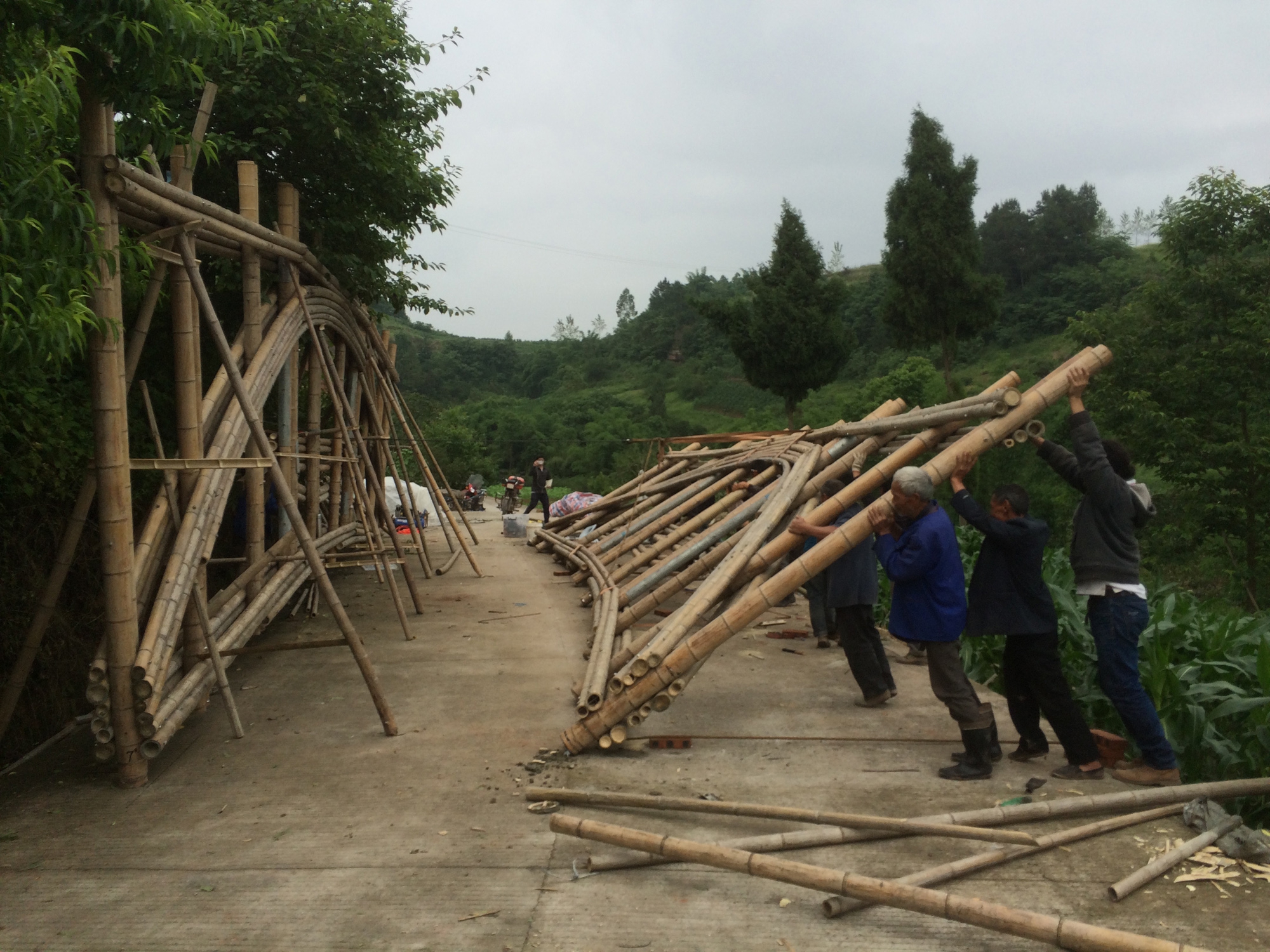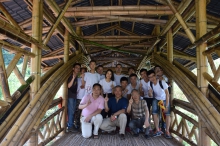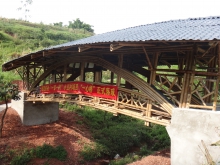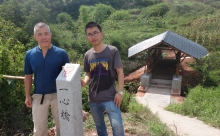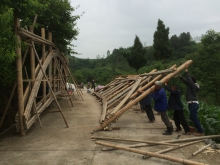CUHK
News Centre
CUHK Staff and Students Build Sustainable Bamboo Bridge in Rural Mainland
The ‘One University One Village’ team led by Yao Ling Sun Professor of Architecture Prof. Edward Ng Yan-yung of The Chinese University of Hong Kong (CUHK) has built the first modern bamboo bridge—Yi Xin Qiao— in the rural mainland in July. The bridge, incorporating the idea of sustainability and modern knowledge of mechanics, eliminates the difficulties and danger impoverished villagers face when they cross the river. The team made use of the abundance of moso bamboo in southern China in the project. With their improved folk methods of bridge building, the construction was completed in just two months. It serves as a reference for the future industrialization of bamboo bridge building.
Many impoverished villages in southwestern China are located in mountainous areas, where transportation is inconvenient, development lags behind, and resources are scarce. Basic necessities are often short. Professor Edward Ng and Dr Wan Li of the School of Architecture at CUHK then launched the One University One Village Rural Sustainable Development Assistance Program in 2014, hoping to help villagers tackle their difficulties with professional knowledge and local resources. The One University One Village team started the Yi Xin Qiao project in Xiaowu Village in June last year. Before the new bridge was built, the villagers relied on a low stone board to cross the river, posing great danger. There was once an old man crossing the bridge by himself who was flushed down the river and killed.
One University One Village team member and Architecture PhD student at CUHK Shao Changzhuan (project’s person-in-charge) combined his research on bamboo bridges and their practical use to improve the lives of Chinese villagers. Yi Xin Qiao is a covered bamboo arch bridge measuring 13.5 meters long and 2.9 meters wide. Thirty people can go on it at the same time. Standing amid the shadows of trees, the bridge merges nicely with the surrounding environment. Yi Xin Qiao not only provides a safe and convenient crossing for villagers, but also a space for them to gather and rest. An 89-year-old villager said he had never expected such a practical bridge made of bamboo in his life, although the material is ubiquitous in the region.
Chongqing Jiaotong University provided the laboratory and student helpers for the Yi Xin Qiao project. The project gathered bamboo bridge experts from both the mainland and overseas. Columbian architects Xavier Pino and Eduardo Sales Delgado, and traditional Chinese bamboo craftsmen from places such as Zhejiang and Anhui got together in Chongqing to give professional advices on the project’s technical details. The study of structure also benefitted from the guidance and advice of Tsinghua University Fellow Professor Chen Zhaoyuan. Project members learned from the design and construction process, while amending designs of the bridge components.
Local resources: efficient and sustainable
Yi Xin Qiao was built with the principles of environmental friendliness and sustainable development. The main structure was constructed with whole bamboos, while bamboo panels were used in the flooring. Little steel was used, only in the bolts and connecting parts, where angle steel bars were used. Moso bamboo is abundant in southern China, so it is readily available in the village. Bamboo only needs three to five years to become fully grown, and is more environmentally friendly, less polluting, and cheaper than the common steel and concrete structures. After treatment with steam and chemical solutions, bamboo becomes mold and bug resistant. Its life will also be extended to around 15 years. The project takes advantage of the special nature of moso bamboo and improves folk bamboo bridge designs by incorporating knowledge of mechanics. It uses prefabricated components to increase efficiency. The construction part was completed in only two months.
Industrialization and Standardization of Bamboo Bridge-making
Shao studied bridge structural engineering for his undergraduate degree. He hopes the construction of bamboo bridges can be industrialized. He said, ‘Although bamboo bridge projects in both the mainland and overseas now use electrical devices to speed up the construction process, they are still largely built inefficiently by hand. I hope I can improve and industrialize the traditional bridge-making techniques by streamlining and standardizing the procedures. Most components will be processed in factories, and they only have to be put together at the site. In this way, quality will be ensured and details more precise. Thus, efficiency will be improved.’
Following the completion of the first Yi Xin Qiao project, preparation work for the second one will begin soon. Professor Edward Ng said, ‘The One University One Village program aims to improve the processing and shaping techniques of bamboo material through practice. It is hoped that a standardized method of bamboo-bridge building would be developed, so more mainland villagers would be benefitted. We will also set up workshops in the mainland for training, and to provide convenient locations for production and construction.’
About One University One Village
The One University One Village Rural Sustainable Development Assistance Program (www.1U1V.org) was prepared and launched by Professor Edward Ng Yan Yung and Dr Wan Li of the School of Architecture at CUHK in 2014. Its idea is to gather professional knowledge and manpower from one higher institution to help improve the environment and livelihood of one village strategically, systemically and sustainably.
Each One University One Village project is supervised by a doctoral student at the CUHK School of Architecture. The results of the project form part of the thesis, while the student’s academic research is put into practice. In the process, talents of different professional fields from overseas and the mainland work together to improve lives in villages. They help the needy, promote education, protect the environment, and support cultural, social and economic development.
The first One University One Village project was in Qiunatung Village, Nujiang Prefecture, Yunnan, in which Peking University and Hong Kong Polytechnic University were invited to conduct a public health survey. Recently, another program to promote early childhood development was launched there with Chung Chi College of CUHK and the Education University of Hong Kong. In 2014, in response to the aftermath of an earthquake, the One University One Village team launched a project to rebuild Guangming Village in Zhaotung City, Yunnan, with Kunming University of Science and Technology and the University of Cambridge. Two anti-seismic rammed-earth demonstration village houses were built.
Prof Edward NG (middle, front row), Yao Ling Sun Professor of Architecture, CUHK; Prof YANG Jun (left, front row), Tsinghua University; Prof XIANG Zhongfu (right, front row), Chongqing Jiaotong University; Xavier Pino (middle, back row), Columbian architect; and student volunteers from Chongqing Jiaotong University pose for a photo on the modern bamboo bridge ‘Yi Xin Qiao’.
‘Yi Xin Qiao’ incorporates the idea of sustainability and modern knowledge of mechanics, eliminates the difficulties and danger impoverished villagers in the rural mainland face when they cross the river. The opening ceremony was held on 31 July.
Prof. Edward Ng (left) and his Architecture PhD student Shao Changzhuan launch the bamboo bridge building project.



